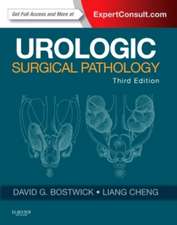Renal Disease: Techniques and Protocols: Methods in Molecular Medicine, cartea 86
Editat de Michael S. Goligorskyen Limba Engleză Hardback – 9 iul 2003
| Toate formatele și edițiile | Preț | Express |
|---|---|---|
| Paperback (1) | 792.33 lei 6-8 săpt. | |
| Humana Press Inc. – 10 noi 2010 | 792.33 lei 6-8 săpt. | |
| Hardback (1) | 1111.26 lei 6-8 săpt. | |
| Humana Press Inc. – 9 iul 2003 | 1111.26 lei 6-8 săpt. |
Din seria Methods in Molecular Medicine
- 5%
 Preț: 1278.74 lei
Preț: 1278.74 lei - 15%
 Preț: 655.78 lei
Preț: 655.78 lei - 5%
 Preț: 1106.50 lei
Preț: 1106.50 lei - 5%
 Preț: 727.44 lei
Preț: 727.44 lei - 5%
 Preț: 1108.72 lei
Preț: 1108.72 lei - 15%
 Preț: 650.55 lei
Preț: 650.55 lei - 5%
 Preț: 735.66 lei
Preț: 735.66 lei - 18%
 Preț: 947.35 lei
Preț: 947.35 lei - 18%
 Preț: 948.92 lei
Preț: 948.92 lei - 5%
 Preț: 1114.54 lei
Preț: 1114.54 lei - 5%
 Preț: 1114.91 lei
Preț: 1114.91 lei - 15%
 Preț: 658.55 lei
Preț: 658.55 lei - 5%
 Preț: 734.01 lei
Preț: 734.01 lei - 5%
 Preț: 1111.61 lei
Preț: 1111.61 lei - 5%
 Preț: 1104.32 lei
Preț: 1104.32 lei - 5%
 Preț: 723.21 lei
Preț: 723.21 lei - 5%
 Preț: 1106.13 lei
Preț: 1106.13 lei - 5%
 Preț: 723.05 lei
Preț: 723.05 lei - 5%
 Preț: 1108.35 lei
Preț: 1108.35 lei - 5%
 Preț: 723.42 lei
Preț: 723.42 lei - 5%
 Preț: 1115.65 lei
Preț: 1115.65 lei - 5%
 Preț: 786.86 lei
Preț: 786.86 lei - 5%
 Preț: 1133.01 lei
Preț: 1133.01 lei - 5%
 Preț: 1114.71 lei
Preț: 1114.71 lei
Preț: 1111.26 lei
Preț vechi: 1169.74 lei
-5% Nou
Puncte Express: 1667
Preț estimativ în valută:
212.63€ • 222.61$ • 175.94£
212.63€ • 222.61$ • 175.94£
Carte tipărită la comandă
Livrare economică 05-19 aprilie
Preluare comenzi: 021 569.72.76
Specificații
ISBN-13: 9781588291349
ISBN-10: 1588291340
Pagini: 520
Ilustrații: XVIII, 500 p.
Dimensiuni: 155 x 235 x 33 mm
Greutate: 0.84 kg
Ediția:2003
Editura: Humana Press Inc.
Colecția Humana
Seria Methods in Molecular Medicine
Locul publicării:Totowa, NJ, United States
ISBN-10: 1588291340
Pagini: 520
Ilustrații: XVIII, 500 p.
Dimensiuni: 155 x 235 x 33 mm
Greutate: 0.84 kg
Ediția:2003
Editura: Humana Press Inc.
Colecția Humana
Seria Methods in Molecular Medicine
Locul publicării:Totowa, NJ, United States
Public țintă
ResearchCuprins
Optimizing The Usage of Models Renal Disease.- Standards of Animal Care in Biological Experiments.- Models of Polycystic Kidney Disease.- Rat Models of the Metabolic Syndrome.- Models of Glomerulonephritis.- Choices of Imaging Techniques in Studies of Renal Disease.- Functional Studies of the Kidney with Magnetic Resonance Imaging.- Use of Radionuclides to Study Renal Function.- Intravital Videomicroscopy.- Confocal and Two-Photon Microscopy.- Atomic Force Microscopy in Renal Physiology.- Freeze-Fracture Analysis of Renal-Epithelial Tight Junctions.- Studies of Renal Development.- Organ Culture of Intact Metanephric Kidneys.- The Ureteric Bud.- Studies of Cell Lineage in the Developing Kidney.- Transient Transfection Assays for Analysis of Signal Transduction in Renal Cells.- Approaches to Study Molecular Mechanisms of Disease.- The Study of Gene Polymorphisms.- Laser-Capture Microdissection.- Serial Analysis of Gene Expression.- RNA Labeling and Hybridization of DNA Microarrays.- Gene-Expression Analysis of Microdissected Renal Biopsies.- The Use of SELDI ProteinChip® Array Technology in Renal Disease Research.- Technical Means to Assess Functional Correlates of Disease.- Clearance Studies in Genetically Altered Mice.- Long-Term Blood-Pressure Monitoring in Unrestrained Animals.- In Vitro Studies on Renin Release.- Mitochondrial Function.- Detection of Cysteine S-Nitrosylation and Tyrosine 3-Nitration in Kidney Proteins.- Products of Arachidonic Acid Metabolism.- Methods for Measurements of Heme Oxygenase (HO) Isoforms-Mediated Synthesis of Carbon Monoxide and HO-1 and HO-2 Proteins.- The Juxtamedullary Nephron Preparation.- Tubuloglomerular Feedback.- Microdissected Perfused Vessels.- Renal Microperfusion Techniques.- How to Design a Clinical Trial.- Mapping theDisease.
Textul de pe ultima copertă
Today's investigator, overwhelmed by the information avalanche, may find it difficult to analyze emerging advances in technology. In Renal Disease: Techniques and Protocols, leading experts distill their experience into user-friendly methods for studying fluid-electrolyte homeostasis and kidney function in health and disease. Described in step-by-step detail, the techniques move from the molecular level to the whole organism, and from simple models to integrative physiology. Here the researcher will find established disease models, methods for optimizing renal disease research, as well as much help in choosing imaging techniques for studies of the kidney's structure and function in health, disease, and during embryonic development. Subjects covered include molecular diagnostics, strategies for studying the molecular mechanisms of kidney disease, technical means to assess the functional correlates of disease, and the planning of clinical trials. In addition to detailed instructions, each cutting-edge method includes troubleshooting advice, lists of reagents, and tips on avoiding pitfalls.
State-of-the-art and highly practical, Renal Disease: Techniques and Protocols is not only a vade mecum for the many techniques employed to study the kidney in health and disease today, but also a user-friendly guide for the uninitiated, and a thoughtful consult for the experienced researcher.
State-of-the-art and highly practical, Renal Disease: Techniques and Protocols is not only a vade mecum for the many techniques employed to study the kidney in health and disease today, but also a user-friendly guide for the uninitiated, and a thoughtful consult for the experienced researcher.
Caracteristici
Includes supplementary material: sn.pub/extras













